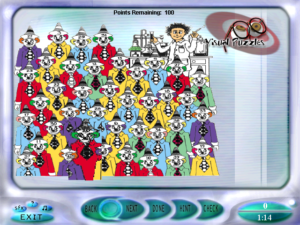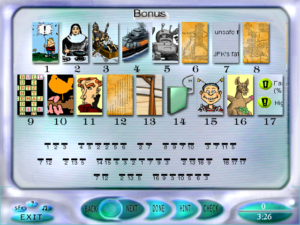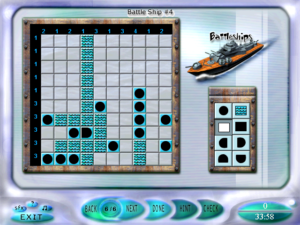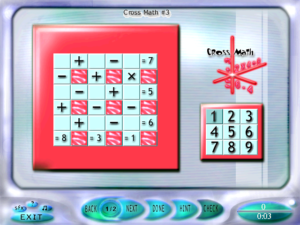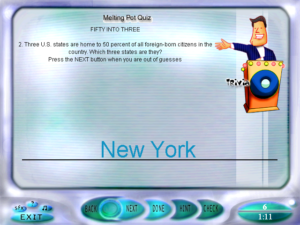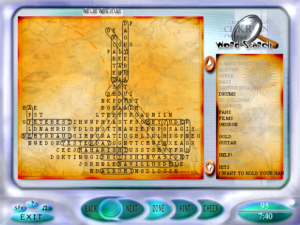A Couple of Good, Short Platformers
 Recent comments begging me to play something short and good after my recent experiences put me in mind of Refunct, a very pleasant game I played a while back, and replayed more recently when it got Steam trading cards. I wound up idling to get all the cards, mind you. This is a game that takes about a half an hour to play through even if you have no idea what you’re doing. But it’s a high-quality half hour. It’s a little gem of a puzzle-platformer, and furthermore, it’s study in first-person platformer technique, unencumbered by story.
Recent comments begging me to play something short and good after my recent experiences put me in mind of Refunct, a very pleasant game I played a while back, and replayed more recently when it got Steam trading cards. I wound up idling to get all the cards, mind you. This is a game that takes about a half an hour to play through even if you have no idea what you’re doing. But it’s a high-quality half hour. It’s a little gem of a puzzle-platformer, and furthermore, it’s study in first-person platformer technique, unencumbered by story.
The whole thing is set on a group of rectangular concrete pillars and slabs in the middle of a calm ocean. Some of them have buttons on top, and standing on a button causes more pillars to rise up from the waters. In fact, you can see them under the surface waiting to be summoned, the entire game lying latent. Also, any platform, whether it’s useful for reaching a button or not, changes color when you stand on it, turning brownish with a grassy green carpet on top. This provides direction, as the places you need to get to are visually distinct from the places you’ve already been, and also an implicit secondary goal of reaching every platform, not just the ones you need.
The really impressive thing about it is the wordless tutorial aspect. It keeps introducing new things you can do, and for the most part, it introduces them simply by giving you a reason to try doing them. For example, at one point there’s a button at the bottom of a narrow pit enclosed by slabs. It’s easy to jump in, but how do you get out? Inevitably, the player tries wall-jumping, if only by accident as a result of flailing around in the game’s first small enclosed space, and discovers that it works. You’ve had the ability to wall-jump all along, but you probably didn’t notice until that moment.
 And now that I put that into words, it reminds me of a moment in another charming little platformer I played some time back and have been meaning to write something about ever since: BasketBelle, a sort of stylized urban-fantasy game about the value of family and the power of basketball. Actually, it’s a little inaccurate to call it a platformer; its mechanics are kind of all-over-the-place, and its last few levels are all about flying forward unstoppably and dodging obstacles. Its best and most memorable parts, however, are basketball-themed platforming, with levels based on the clever conceit of throwing a ball through a hoop to open the door to the next level. Sometimes the level geometry forces you to do this from a considerable distance, and you have to clear the ball’s path of obstacles for it to work.
And now that I put that into words, it reminds me of a moment in another charming little platformer I played some time back and have been meaning to write something about ever since: BasketBelle, a sort of stylized urban-fantasy game about the value of family and the power of basketball. Actually, it’s a little inaccurate to call it a platformer; its mechanics are kind of all-over-the-place, and its last few levels are all about flying forward unstoppably and dodging obstacles. Its best and most memorable parts, however, are basketball-themed platforming, with levels based on the clever conceit of throwing a ball through a hoop to open the door to the next level. Sometimes the level geometry forces you to do this from a considerable distance, and you have to clear the ball’s path of obstacles for it to work.
The father of BasketBelle‘s player character is a retired basketball star. Several times in the story, starting with the opening cutscene, it’s asserted that he had the power of flight. Toward the end, you encounter him, and he reveals that you too can fly, and always could — and then tells you the controls for doing it. Now, when I read those words, my reaction was “Wait, is this true? Did I have this power all along? Could I have used this technique to fly at earlier points in the game?” And so I tried starting the game over, and discovered that it was a lie. Even though I, the player, knew how flight is done, the ability to actually do it was locked until I reached the point in the story where the PC learns that he’s always had this power.
So basically, we have here two games with common element, of discovering that you have an ability that you didn’t know about. But BasketBelle does it entirely at the level of story, while Refunct does it entirely at the level of gameplay. And I have to say, I like it better at the gameplay level. At the story level, the moment is entirely unreal, just part of a story I’m told. At the gameplay level, it’s half-real: wall-jumping is a fictional ability, but in a way, it’s really the case that I had this fictional ability all along.
 Comments(0)
Comments(0)
